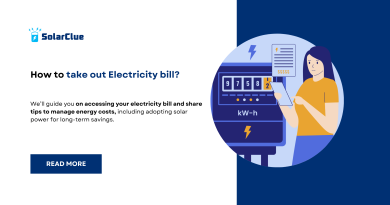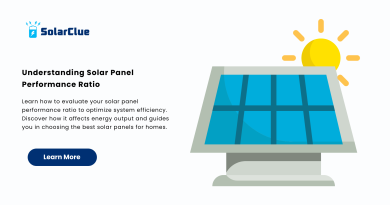How To Build A Solar Panel Stand?
A sturdy and well-designed solar panel stand is essential for optimizing the performance of your solar panels. Whether you’re using wood, metal, or PVC, building your own solar panel stand allows you to customize the setup to meet your specific needs. This guide will cover the materials required, design considerations, and step-by-step instructions for constructing different types of solar panel stands. We’ll also discuss safety tips, cost estimates, and factors to consider when choosing materials and design.
Table of Contents
- 1 Materials and Tools Needed
- 1.1 Determining the Optimal Size and Angle for Your Solar Panel
- 1.2 Step-by-Step Construction Process
- 1.3 Securing the Solar Panel to the Stand
- 1.4 Tips for Maintenance and Durability
- 1.5 Alternative Options for Purchasing Pre-Made Solar Panel Stands
- 1.6 Cost Comparison of DIY Solar Panel Stands
- 1.7 Conclusion
- 1.8 FAQs
Materials and Tools Needed
Depending on the type of solar panel stand you want to build, the materials and tools will vary. Below is a table summarizing the materials and tools required for stands made of wood, metal, and PVC.
| Material | Wood | Metal | PVC |
|---|---|---|---|
| Frame Material | Pressure-treated wood (2x4s or 2x6s) | Aluminum or steel pipes | PVC pipes (schedule 40 or higher) |
| Connectors/Brackets | Galvanized steel brackets and screws | Metal brackets, nuts, and bolts | PVC connectors (elbows, tees, etc.) |
| Fasteners | Wood screws or lag bolts | Nuts, bolts, and washers | PVC cement |
| Tools Needed | Saw, drill, measuring tape, level | Metal saw, drill, wrench set | PVC cutter, measuring tape, level |
Determining the Optimal Size and Angle for Your Solar Panel
To maximize the efficiency of your solar panels, it’s essential to determine the optimal size and angle for the stand. The angle should be based on your geographic location and the time of year, typically between 30° to 45° for most locations. The size of the stand should be large enough to securely hold the panels while allowing for airflow underneath.
Step-by-Step Construction Process
1. Wooden Solar Panel Stand
Cut the Wood: Measure and cut the wood to the desired lengths for the frame, legs, and supports.
Assemble the Frame: Use galvanized steel brackets and screws to connect the frame pieces.
Attach the Legs: Secure the legs to the frame at the desired angle using screws or lag bolts.
Add Cross Supports: Install cross supports between the legs for added stability.
Secure the Solar Panel: Place the solar panel on the stand and secure it using brackets or clamps.
2. Metal Solar Panel Stand
Cut the Metal Pipes: Use a metal saw to cut the pipes to the required lengths.
Assemble the Frame: Connect the pipes using metal brackets, nuts, and bolts. Ensure the frame is level.
Attach the Legs: Secure the legs to the frame, adjusting the angle as needed.
Install Cross Bracing: Add cross bracing between the legs to improve stability.
Mount the Solar Panel: Place the solar panel on the stand and secure it with metal clamps.
3. PVC Solar Panel Stand
Cut the PVC Pipes: Measure and cut the PVC pipes to the correct lengths using a PVC cutter.
Assemble the Frame: Connect the pipes using PVC connectors (elbows, tees) and secure with PVC cement.
Attach the Legs: Insert the legs into the connectors at the desired angle and secure.
Add Support Bracing: Use additional PVC pipes and connectors to brace the legs.
Secure the Panel: Place the solar panel on the stand and fasten it with PVC clamps.
Securing the Solar Panel to the Stand
Properly securing the solar panel to the stand is crucial for safety and durability. Use appropriate brackets, clamps, or straps to attach the panel to the stand securely. Ensure all fasteners are tight and the panel is stable, especially in areas prone to strong winds.
Tips for Maintenance and Durability
- Regular Inspections: Check the stand periodically for signs of wear, rust (for metal), or cracks (for wood and PVC).
- Tighten Fasteners: Ensure that all screws, bolts, and connectors are tight to maintain the stand’s stability.
- Weatherproofing: Apply weather-resistant coatings to wood and metal stands to protect them from the elements.
Alternative Options for Purchasing Pre-Made Solar Panel Stands
If building a solar panel stand seems too complex or time-consuming, there are pre-made stands available for purchase. These stands are designed for easy installation and are often adjustable to accommodate different panel sizes and angles.
Cost Comparison of DIY Solar Panel Stands
| Material | Estimated Cost (₹) | Pros | Cons |
|---|---|---|---|
| Wood | ₹1,500 – ₹3,000 | Affordable, easy to work with | May require more maintenance, less durable |
| Metal | ₹3,500 – ₹7,000 | Durable, long-lasting | More expensive, requires metalworking tools |
| PVC | ₹1,000 – ₹2,500 | Lightweight, corrosion-resistant | Less sturdy, may require frequent repairs |
Conclusion
Building your own solar panel stand can be a cost-effective and rewarding project that allows for customization based on your specific needs. Whether you choose wood, metal, or PVC, following the steps outlined in this guide will help you create a sturdy, durable, and efficient stand for your solar panels. With proper maintenance, your DIY solar panel stand will provide years of reliable service, supporting your move toward sustainable energy.
Here at SolarClue®, we offer a smart, practical, and “beautiful” solution. You will be answered for all the questions related to Solar.
We provide all kinds of brands that are the Best Solar panels in India.
If you are the one who is planning for the solar power system. Don’t hesitate to contact our team!
Looking forward to empowering you with solar energy, just like hundreds of our other clients!
FAQs
1. What is the best material for building a solar panel stand?
The best material depends on your needs. Wood is affordable and easy to work with, metal is durable and long-lasting, and PVC is lightweight and corrosion-resistant.
2. How do I determine the correct angle for my solar panel stand?
The optimal angle is typically between 30° to 45°, depending on your geographic location. Adjust the angle to match the latitude of your location for the best results.
3. Can I use a DIY solar panel stand for large solar panels?
Yes, but ensure that the stand is sturdy enough to support the weight of larger panels, especially if using lighter materials like PVC.
4. Do I need to secure the solar panel stand to the ground?
Yes, securing the stand to the ground is recommended, especially in areas with high wind speeds, to prevent it from tipping over.
5. Is it more cost-effective to build my own solar panel stand or buy one?
Building your own stand is generally more cost-effective, but it requires time, effort, and some technical skills. Pre-made stands are more expensive but save time and are easy to install.


